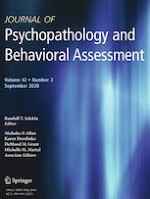19-03-2020
Sex Differences in Externalizing and Internalizing Symptoms in ADHD, Autism, and General Population Samples
Gepubliceerd in: Journal of Psychopathology and Behavioral Assessment | Uitgave 3/2020
Log in om toegang te krijgenAbstract
Oppositional behavior, irritability, and aggression are common in autism and ADHD-Combined presentation (but less frequent in ADHD-Inattentive), and children with autism are at high risk for anxiety. No study has compared sex differences in externalizing and internalizing symptoms between ADHD-Combined, ADHD-Inattentive, autism, and general population samples. The samples comprised 1436 children with autism (with or without ADHD), 1056 with ADHD without autism, and 665 from the general population, 2–17 years. Nine externalizing, four internalizing, and nine somatic symptoms rated by mothers on the Pediatric Behavior Scale did not differ significantly between girls and boys in the autism, ADHD-Combined, and ADHD-Inattentive samples. In the general population, boys had more externalizing problems than girls (particularly hyperactivity, inattention, and aggression), whereas anxiety, depression, and somatic complaints did not differ, with the exception of more stomachaches in girls. The finding that boys have more externalizing problems than girls in the general population has implications for interpreting rating scales. Raw score to standard score conversions for most scales are based on general population sex- and age-specific norms. Therefore, standard scores mask sex differences, and the same standard score for a girl and a boy is not equivalent. A boy must have more severe externalizing problems to earn the same elevated standard score as a girl. When making diagnostic and treatment decisions, clinicians should take into consideration both symptom raw scores (e.g., “often a problem” reflecting symptom severity and the DSM threshold for clinical significance) and standard scores (symptom severity adjusted for sex and age effects).
